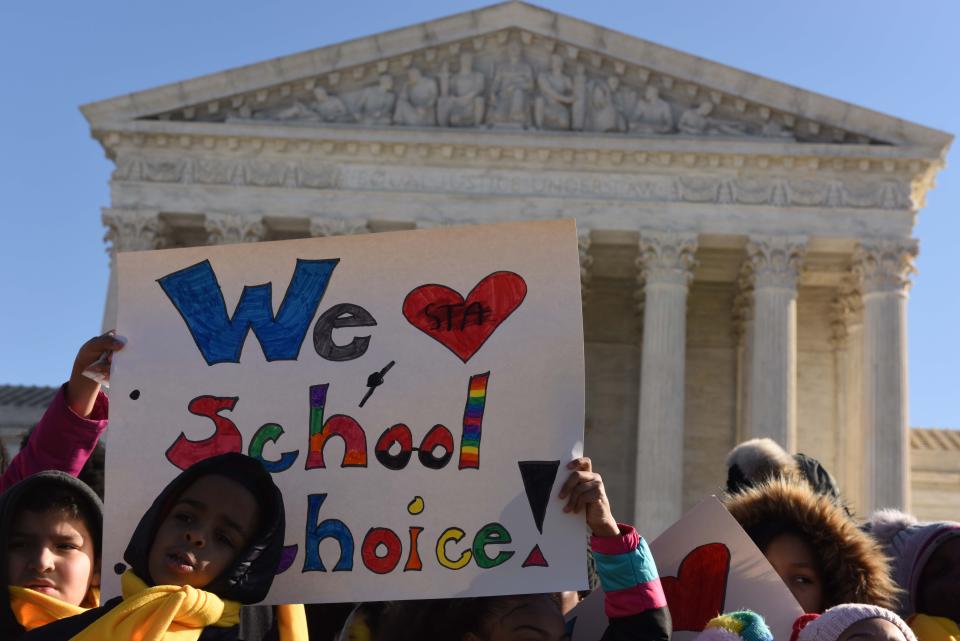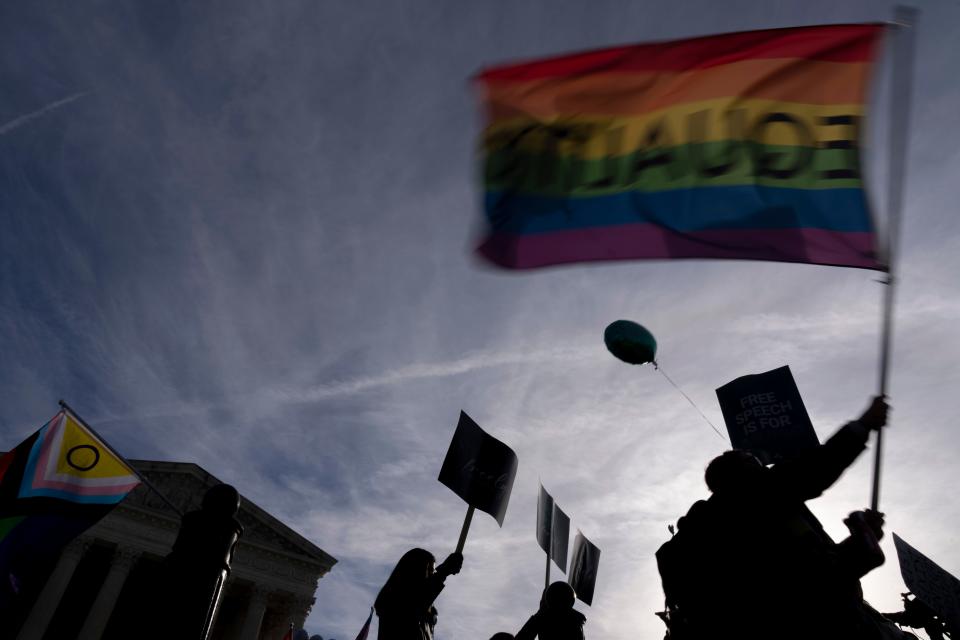How the Supreme Court paved the way for the nation's first religious charter school
- Oops!Something went wrong.Please try again later.
WASHINGTON – A religious charter school in Oklahoma – the first of its kind in the nation – has sparked a fierce battle over the scope of recent Supreme Court decisions that favored religious freedom and blurred the line separating church and state.
A charter school board in Oklahoma voted this month to approve St. Isidore of Seville Catholic Virtual School, a K-12 school that the Archdiocese of Oklahoma City hopes to open next year. The move is almost certain to lead to litigation and could help decide when taxpayer money may be used for religious instruction.
The Supreme Court has repeatedly weighed into disputes in recent years to strike down government prohibitions on public money being used for religious schools – and St. Isidore's supporters say the decision to pursue the Oklahoma charter was inspired in large part by those opinions.
Racker: Race, religion and debt. Here are the biggest cases pending at the Supreme Court
Opponents say the school's supporters read too much into the high court’s rulings, and they warn of significant consequences for public schools if St. Isidore is opened. Charter schools are publicly funded but are not run by the public school system. Several groups that support charter schools generally, such as the National Alliance for Public Charter Schools, also oppose St. Isidore.
Here’s a look at what the Supreme Court has decided in past cases and where the debate may be headed next.
Past decisions: What the Supreme Court has said about religion and schools
In 2017, the court concluded that a Lutheran church in Missouri could apply for a competitive state grant that paid for playground resurfacing. Chief Justice John Roberts wrote in the majority opinion that Missouri's attempt to deny that funding solely because it was a church that applied for the money was "odious to our Constitution" and "cannot stand."
In 2020, the high court ruled that a Montana scholarship program could not exclude religious schools. Roberts, writing for the court's majority, noted that a state doesn’t have to provide money to private schools. But if it chooses to do so, it can’t "disqualify some private schools solely because they are religious," he wrote.
Last year, the high court shut down a prohibition in Maine that barred public money from being directed to schools that offer religious instruction. At issue was an unusual program in the state that provides subsidies for education in rural districts that don't have their own high school. Roberts, writing for a 6-3 majority of conservative justices, held that the state's prohibition violates the First Amendment.
Impact: How St. Isidore could affect public schools
But there is disagreement about whether those earlier opinions clear the way for a religious charter school.
Oklahoma Attorney General Gentner Drummond, a Republican, has warned St. Isidore would create a “slippery slope” toward state-funded religion. He withdrew an opinion from his predecessor, John O’Connor, also a Republican, who said that the Supreme Court decisions compelled the state to accept religiously affiliated charter schools.
Brett Farley, executive director of the Catholic Conference of Oklahoma, said the series of decisions from the Supreme Court were what encouraged the school's supporters to pursue the idea. The justices, Farley said, seemed “with each successive case to be sharpening the pencil a little bit on the question and doubling down” on the idea that public money may be directed at religious schools.
In rural areas of the state, Farley said, “there’s just, in some cases, virtually no alternative options for education.” The church, he said, felt it could meet those needs.
“If we partnered with the state, we could really do some amazing things,” he said. “We felt compelled to do it because that's what the church has done for 500 years.”
But Rachel Laser, president of the Americans United for Separation of Church and State, sees the potential for a slippery slope with enormous consequences for public schools – not to mention taxpayers who may not be excited about public money being directed to religious institutions they disagree with.
“The approval of St. Isidore’s application opens the door to a very dangerous strategy of turning our public schools into religious schools,” Laser said. “Public schools are a glue for our democracy. … They teach our children the secular values that are American.”

Debate: Religious freedom vs. LGBTQ discrimination
Another question unresolved in the Supreme Court’s recent rulings: whether a religious school that receives public funding may fire LGBTQ teachers and staff.
Most employers are barred from discriminating against employees based on race, sex and sexual orientation. But federal anti-discrimination law carves out an exception for “ministers” and other staff at religious entities who perform religious duties. Precisely who qualifies for that “ministerial exemption” is a hotly debated question in federal courts.
The Supreme Court ruled in 2020 that teachers at private religious schools fall under that exemption and can be fired.
The justices privately discussed a case this week that could shed light on whether charter schools are subject to the same laws as other public schools, or act more like private entities. The case, Charter Day School v. Peltier, involves a dress code at a school in North Carolina that requires girls to wear skirts. A federal appeals court last year sided with parents and students who challenged the dress code as violating the equal protection clause of the 14th Amendment.
Charter schools are commonly considered public schools but "there's a bit of complexity there because they're sort of public private partnerships," said Nelson Tebbe, a professor at Cornell Law School. "A lot depends on whether they're public schools or private schools. And that's where the debate is shaping up."

Contributing: The Oklahoman
This article originally appeared on USA TODAY: How the Supreme Court inspired nation's first religious charter school

